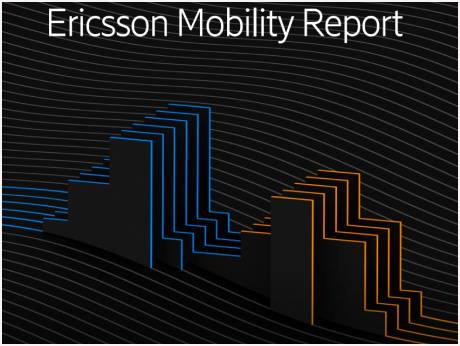
July 8 2020, The 2020 edition of the Ericsson Mobility Report just released estimates the number of 5G subscribers in India by 2025 will represent just 18 % of all mobile subscriptions, while globally the number is 2.8 billion or 30% .A total of 190 million 5G subscriptions are expected worldwide by the end of 2020.
The report states with respect to India:
In the India region, LTE subscriptions are forecast to increase from 550 million in 2019 to 820 million in 2025, increasing at a compound annual growth rate (CAGR) of 7 percent. LTE remains the dominant technology, accounting for 49 percent of mobile subscriptions in 2019. LTE will continue to be dominant, representing 64 percent of mobile subscriptions in 2025.
5G will represent around 18 percent of mobile subscriptions in India at the end of 2025. Mobile broadband technologies accounted for 58 percent of mobile subscriptions in 2019, and this figure is predicted to reach 82 percent by 2025.
The total number of mobile broadband subscriptions is set to exceed 1 billion by 2025. The number of smartphone subscriptions has increased to 620 million in 2019 and is expected to grow at a CAGR of 9 percent, reaching 1 billion by 2025.
Says Fredrik Jejdling Executive Vice President and Head of Business Area Networks, Ericsson:“Today, connectivity is key and so far, telecom networks have stood up to the task. This massive disruption has highlighted the value of the network. While in some markets 5G subscription growth has slowed as a result of the pandemic, this is outweighed by other markets where it is accelerating, leading us to raise our forecast of global 5G subscriptions at the end of 2020.”
“However, the success of 5G cannot be measured in subscriptions alone. The value 5G brings will be determined by the success of new use cases and applications for consumers and businesses
5G was made for innovation and, as the value of the digital infrastructure has been further evidenced during these recent times, 5G investments can play a significant role in restarting economies.”
On 5G devices, the report says: “Despite the uncertainty caused by the COVID-19 crisis, the 5G device ecosystem is continuing to expand, as both standalone (SA) and non‑standalone (NSA) networks are rolled out and new frequency bands are utilized: Over 100 commercial 5G device models are roling out. Retail prices of 5G devices are expected to be as low as USD 300–400 in the second half of 2020, reaching mid- to low‑tier segments.
New 5G radio
In a separate announcement, Ericsson states that communications service providers can now tap the full potential of 5G New Radio (NR) technology with the commercial availability of Ericsson Standalone 5G NR software for 5G mid- and low bands. The software became globally available to all customers in June.
With this software, communications service providers can now operate 5G NR without the need for signaling support from an underlying LTE network. This will allow service providers to add 5G NR to existing 4G sites with a simpler architecture, or deploy 5G independently in new areas such as factories, to support enterprise applications and services. All Ericsson Radio System equipment deployed since 2015 can support Standalone 5G NR capabilities with a software installation.